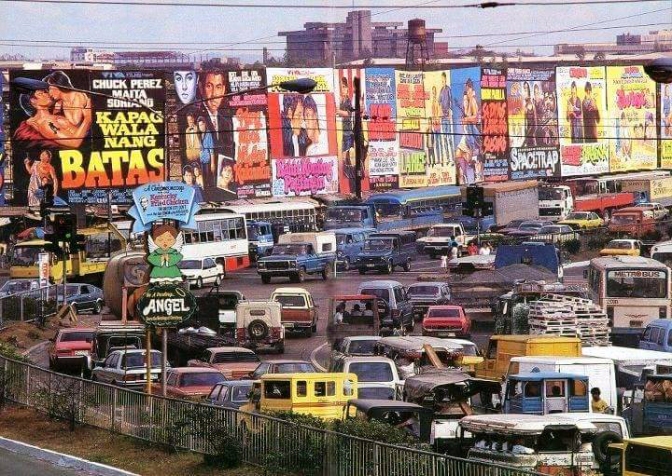
The road that bisects the SM City North EDSA Mall, from Epifanio de los Santos Avenue (EDSA for short), is Misamis Street; which is part of Barangay Pag-asa (Hope) and Barangay Bago Bantay (New Guardians) of the post-World War II (1939-1945) relocation Homesite Program’s Project 6 District. Most of the roads in this area are named after Philippine provinces; including the province of Misamis, located in the southern island of Mindanao. However before the war, the North–South Circumferential Road (now EDSA) was constructed to connect the different municipalities that would become Metro Manila, as well as the American military camps in these municipalities and the northern and southern Luzon provinces.
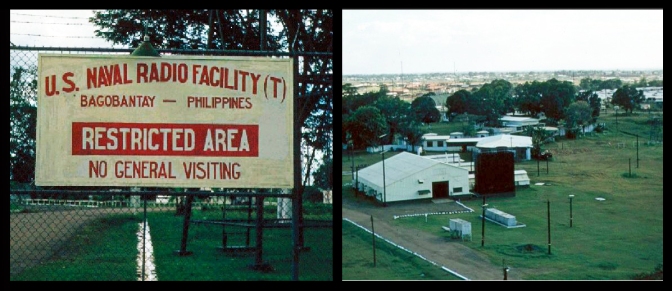
From the South Diversion Road (now the South Luzon Expressway), route would create easy access to the Naval Station Sangley Point in the Province of Cavite, the Nichols Air Base (now the Colonel Jesus Villamor Air Base) in Pasay City, the Manila International Air Terminal (aka the Nielson Airport, completed in 1937) in the Municipality of Makati, the United States Army Forces in the Far East (USAFFE) infantry base and headquarters Fort William Allison McKinley Jr. (now the Philippine Army’s Fort Bonifacio and Bonifacio Global City)in the Municipality of Taguig, the Philippine Army’s Camp William Francis Brennan Murphy (now Camp Emilio Famy Aguinaldo) and the Philippine Constabulary’s Camp Rafael Pérez de Tagle Cramé in San Juan del Monte (now a part of Quezon City), and continues to the North Diversion Road (now the North Luzon Expressway) to connect to the US Naval Base Subic Bay in the Province of Zambales, the Artillery and Cavalry Regiments of Fort John Miller Stotsenburg and the Harold Melville Clark Airbase in Province of Pampanga, the Philippine Army’s Camp Emmett E. O’Donnell Jr. and the Crow Valley Gunnery Range (now the Colonel Ernesto Rabina Air Base) in the Province of Tarlac, and all the way to the Philippine Constabulary’s Camp Henry T. Allen (now the Philippine Military Academy’s Fort Gregorio Hilario Sempio del Pilar) and the US Infantry Camp John Milton Hay in Baguio City. Along that route was the US Navy Transmitting Corps compound on a dirt road that would later become Misamis Street.
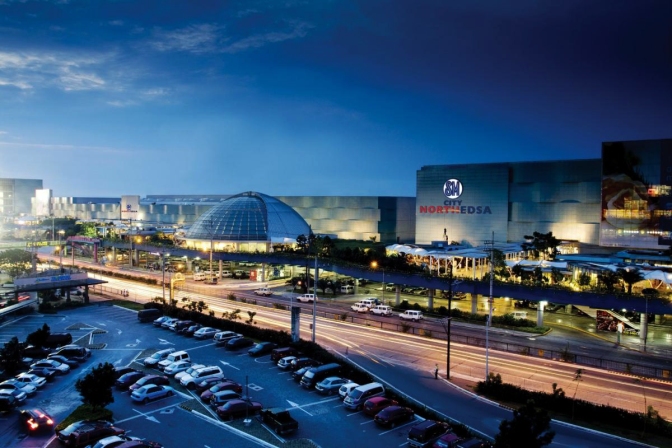
From EDSA, the most visible landmark on Misamis Street is the SM City North EDSA Mall, which stretches all the way to the North Avenue. The mall opened in 1985, and it is the first of the “Supermalls” of the Shoe Mart chain of malls that occupy huge blocks of land, and hold hundreds of business establishments inside. The original SM North EDSA started with a 120,000 square meter lot, but has expanded its land area to 161,000 square meters by opening the Interior Zone (including the Car Park Plaza) in 1988, the SM City Annex in 1989, the SM City Annex expansions in 2008, The Block in 2006, the SM City Sky Garden in 2009, the SM CITY Northlink in 2018, the SM City North Towers in 2018, the SM Cyber West Avenue in 2017, and the SM Grass Residences in 2018. The original SM North EDSA was designed by Arch. William Cosculluela.
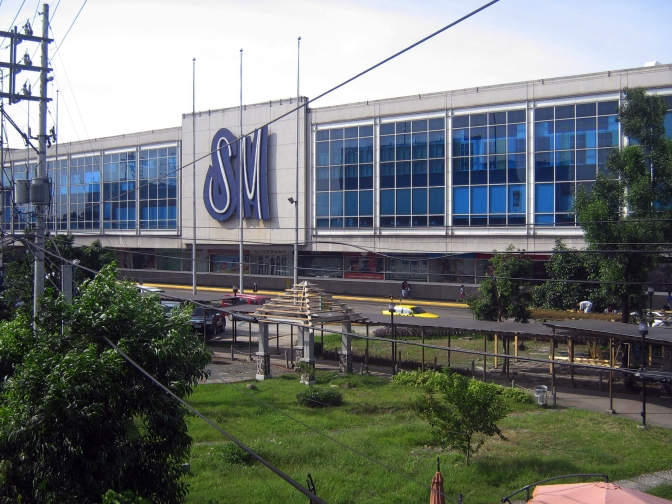
Arch. William Vargas Coscolluela (born 1933) is a graduate of the Mapua Institute of Technology, with a Mapua president’s gold medal, in 1957. A registered architect in the Philippines and the state of California, Coscolluela is a member of both the Philippine Institute of Architects (PIA) and the American Institute of Architects. Noted for his design for commercial buildings, such as malls, all over the country, Coscolluela has designed buildings locally and in Palau, New Guinea, China, Malaysia, Indonesia, Singapore, and the United States.
Tucked behind the SM City Annex is San Francisco High School, which was founded in 1954 as annex of the Quezon City High School (est. 1947 as Quezon City’s first public secondary school) in Barrio Obrero (now the Kamuning District). Other annexes of Quezon City High School were the Roces Annex in 1951, La Loma (E. Rodriguez Jr. High School) in 1952, Ramon Magsaysay (Cubao) High School and Quirino High School in 1953, and Galas High School (Carlos Albert High School) in 1955. The new school was originally located on the southern side of Highway 54 (now EDSA), and was named after the District of San Francisco Del Monte, where the school situated. After gaining independence by 1957, the school found itself running out of space with the growing population of students. So in 1964, the San Francisco High School relocated to the 5 hectare lot and using the Quonset buildings of the US Navy Radio Facility Bago Bantay, which was abandoned two years before. Between 1971 and 1985, the school’s name was changed to the Don Mariano Marcos High School, after the father of Pres. Ferdinand Emmanuel Edralin Marcos Sr. (1917-1989). Immediately after Marcos was ousted with the 1986 EDSA People Power Revolution, the school reverted its name back to the San Francisco High School.
In 2006, the Quezon City Polytechnic University (est. 1994) started operations within the San Francisco High School compound, as satellite school of its main campus in the district of Novaliches. The San Francisco High School now became the high school branch of the Quezon City Polytechnic University, and opened its Quezon City Science Interactive Center in 2007, for students to have a hands-on experience on subjects such as electromagnetism, fiber optics, polarization, and robotics. In 2019, Quezon City Polytechnic University changed its name to the Quezon City University.
Further up Misamis Street is the Quezon City Science High School, which was founded 1967. Foldly called QueSci or Kisay, the Quezon City Science High School has a special science curriculum for scholars gifted in science and mathematics, and is part of the three premier public science schools of the Philippines, along with Philippine Science High School (est. 1964) on Agham Road in Quezon City and the Manila Science High School (est. 1963) on Padre Faura Street in Manila. Another public educational institution in the vicinity is the Santo Cristo Elementary School (est. 1965), on Ilocos Sur Street.
Across Quezon City Science High School on Misamis Street is the Department of Education NRC Office (DepEd National Capital Region), which has jurisdiction over the 16 school districts of the 17 cities of Metro Manila. The scope of that jurisdiction covers 516 public elementary schools, 456 public junior and senior high schools, 1,982 private pre-schools, 2,122 private elementary schools, 965 private junior high schools, and 721 private senior high schools. Another national government office on Misamis Street is the Commission on Elections (COMELEC) Quezon City field office’s Herbert Constantine Maclang Bautista Building, which opened in 2018. On the façade of the COMELEC Building is the Latin quote “Vox Populi, Vox Dei,” which means “The Voice of the People is the Voice of God.”
North of the Quezon City Science High School is the Reception and Study Center for Youth and Children (RSCC), of the Department of Social Welfare and Development (DSWD). The RSCC opened in 1967 as one of the social development projects of Pres. Ferdinand Marcos and First Lady Imelda Romualdez Marcos (born 1929), and acts as a temporary home for abandoned children, between the ages 0 and 6 years.
In 2012, I had my students from the Far Eastern University (FEU) Institute of Architecture and Fine Arts (IARFA) enacted programs for the children of the RSCC, as part of their National Service Training Program (NTSP). Aside from storytelling sessions and art workshops, my students also executed several murals for the RSCC, which can still be seen today at the RSCC entrance on Misamis Street.
Behind RSCC and Quezon City Science High School lots is the Ginintuang Paligid, a DSWD home for abandoned and neglected senior citizens. Opened in 1969, the Ginintuang Paligid was first named the Golden Acres Home for the Aged, but changed names when the DSWD moved the main operations to the Haven for the Elderly in the City of Tanay, in 2010. Before the transfer and change of name, the newest building erected in the Golden Acres was the multi-purpose Louis S. Coson Hall. Erected in 2006, the hall was donated by the family of lumber tycoon Louis S. Coson (died 2003), husband of the vice chair of SM Investments Corporation (SMIC) and chair of BDO Unibank, Inc. (BDO), Teresita Tan Sy Coson (born 1950); who in turn is the daughter of the businessman, Henry Tan Chi Sieng Sy Sr. (1924-2019). And in 2013, the Ginituang Paligid was renamed as the Golden Reception and Action Center for the Elderly and Other Special Cases (GRACES).
Another Pres. Marcos project behind the RSCC compound is the Bagong Lipunan Pag-asa Condominiums (New Society’s Hopes or BLPC), which was part of the government’s 1979 residential projects for low-and-middle-income families called Bagong Lipunan Improvement of Sites and Services (BLISS). A collection of 19 apartment buildings, the BLPC project was part of the 230,000 housing units build by Marcos’ Ministry of Human Settlements, from 1979 to 1985. The initial design of the BLISS apartments was created by National Artist for Architecture, Bobby Mañosa.
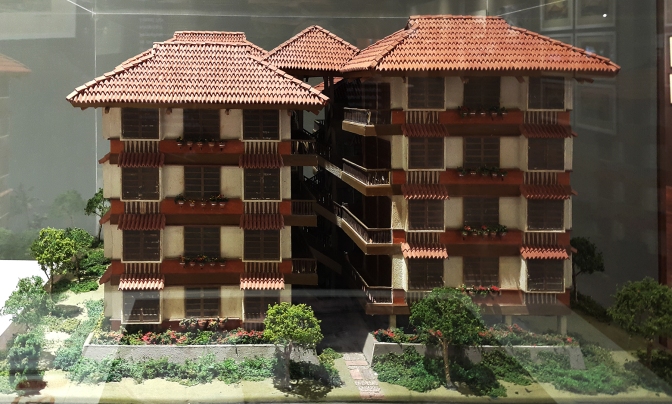
Arch. Francisco “Bobby” Tronqued Mañosa (1931-2019) completed his studies in architecture at the University of Santo Tomas, and also took further studies in landscaping at Tokyo University in Japan. After obtaining his architectural license, Bobby partnered with his brothers, Manuel and Jose, to form Mañosa Brothers and Associates, but he would eventually break out on his own, and form his own company. Inspired by traditional architecture, Mañosa began experimenting with natural material in his designs, and gained recognition throughout the country and abroad. His collaboration with the sculptor Junyee, lead to his creation of the Coconut Palace in 1978, which helped launch the coconut lumber industry in the Philippines. Mañosa was given the PatnubayngSining at Kalinangan Award by the City of Manila in 1982, and the Gold Medal of Merit by the United Architects of the Philippines in 1989. In 2009, Mañosa was proclaimed as a National Artist, but was later revoked, due to the questionable process of his nomination. Although he did clearly deserve the honor, his selection was question by how his name was added without due process, along with two undeserving honorees. Despite this, Mañosa continues with his work, promoting modernist organic approach to architecture, and was finally honored a National Artist in 2019.
Aside from the BLISS apartments, much of the northern part of Misamis Street and its adjoining roads are residential areas. And to fulfill the spiritual needs of the residents, there is the Our Lady of Hope Parish (est. 1966) on Road 3, the Santo Niño Parish Shrine (est. 1978) on Bukidnon Street, the Grace Baptist Church of Pag-asa in the BLISS compound, and the Pag-asa Community Christian Church on Road 4.
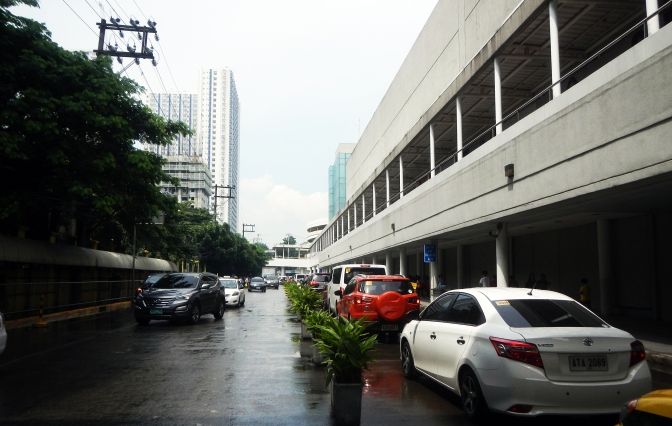
Misamis Street isn’t really a place for any tourist to visit, unless one is interested in shopping in the nearby SM City Mall. However, there is a great need in understanding the history of the area, from its connections with the Katipunan Revolution against the Spain colonial government, to its military importance during the American occupation of the Philippines (1898-1946), to significant developments after World War II (1939-1945), and to the modernization of Quezon City.
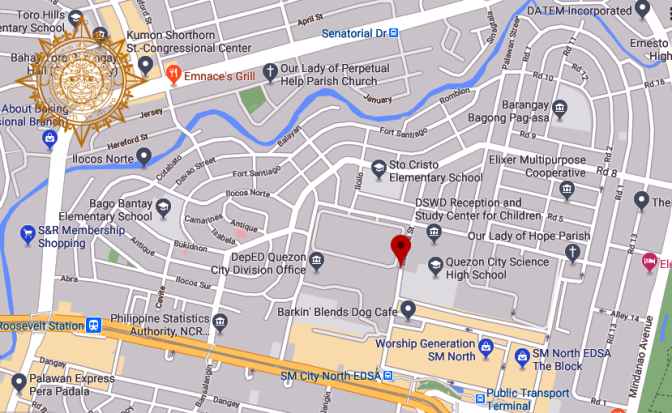























SM North location was formerly NHA property where house models were built in a perimeter with a gazebo at the center.
DEPED, NCR location actually is inside the San Francisco High School; opposite the SM Parking building.
QueSci or Kisay is opposite the Grass Residences which occupies the former location of AFP Commel Bn till 1986 coup d’ etat.
Misamis St would have ran smack into the originally approved SM North LRT station plan supposedly be located at the junction of North Ave, EDSA and West Ave but gave way to the favored Trinoma station of MRT 3 which is of different design with that of the LRT 1 preventing the two train systems being connected considering that both run literally along the same highway. The goverment abandoning the original plan led to a legal case that reached the Supreme Court where SM won its case relative to its Ph2M advance payment for naming the station SM North station. The whole issue became an obvious symbol of stupidity of the highest order in mass transport engineering design if not an outright symbol of the Aquino and Ramos administrations corruption of such magnitude.
LikeLike